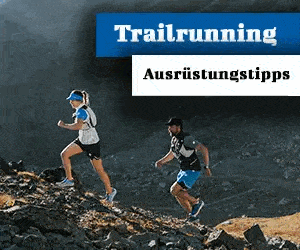In the intoxication of speed at record times. Why do you do that? How high are the risks - and how can they be limited? Christian Penning spoke to four mountaineers about the subject of speed.
By Christian Penning - First published in the trade journal bergundstieg
Daniel Arnold, 36 years
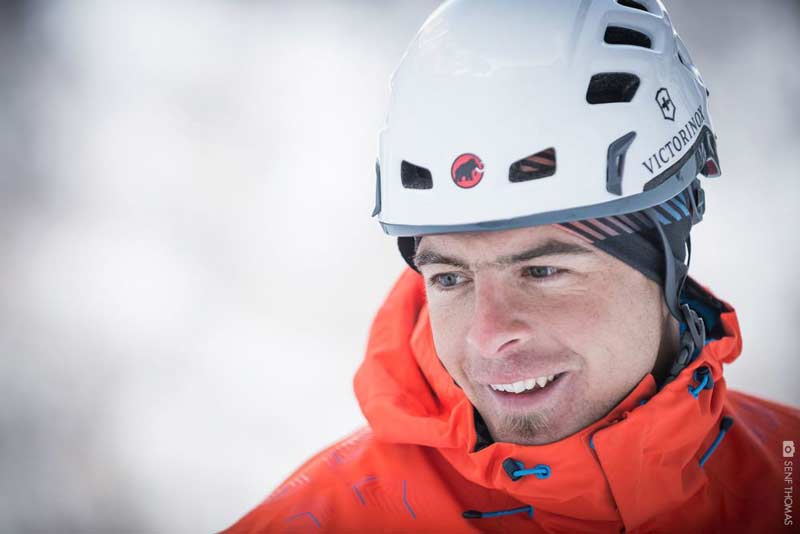
- Extreme mountaineer, mountain guide
- Resident in Bürglen (Switzerland)
- Free-Solo-Speed Große Zinne, north face: 46:30 min
- Grandes Jorasses, north face: 2:04 h
- Eiger north face: 2:28 h
- Matterhorn north face: 1:46 h
“From a rational point of view, speed ascents are completely meaningless - just like climbing in general. We don't need either of these to live. But man is also a homo Ludens. A being who develops his skills through the game. Speed projects are a form of mountaineering.
My main concern is to optimize the processes of traditional mountaineering into automatisms. For outsiders, it may seem breakneck to sprint through the north face of the Eiger in two and a half hours. In fact, it depends on the relationship between the objective level of difficulty on the one hand and personal factors such as experience, ability, fitness and preparation on the other.
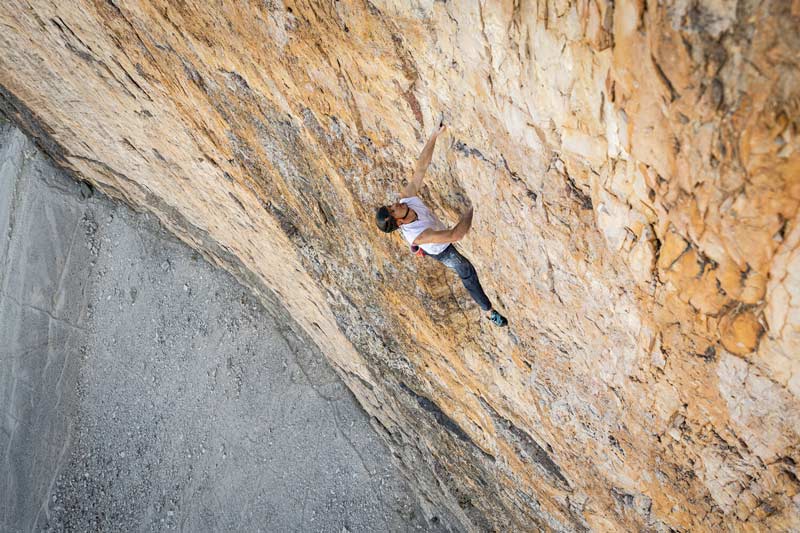
In order to master speed projects safely, you have to be technically good enough that the route is relatively easy for you. Depending on the technical difficulty, exposure of the route, physical and psychological condition, the speed becomes a risk from a certain point. But I'd say I've never been to this point.
The more often I climb exposed routes unsecured, the greater the statistical probability that something will go wrong.
Daniel Arnold
In speed climbing, an absolutely realistic self-assessment is essential. If I were kidding myself, I might soon be dead. Basically, I rarely ride extremely hard and I don't even try to break my own speed records. Because the more I climb exposed routes unsecured, the greater the statistical probability that something will go wrong.
I often go through key points like gymnastics many times in my head for months, like on my free solo speed ascent on the Großer Zinne. Before the tour, I check whether the conditions are 100 percent right. I leave the option of a “no” open until the last moment. Even if that would disappoint photographers or sponsors.
A certain residual risk still remains. But I believe that for dreams and that feeling of total freedom it is worth taking a certain risk. Not everything in life has to make sense. "
Mayan Smith-Gobat, 40 years old
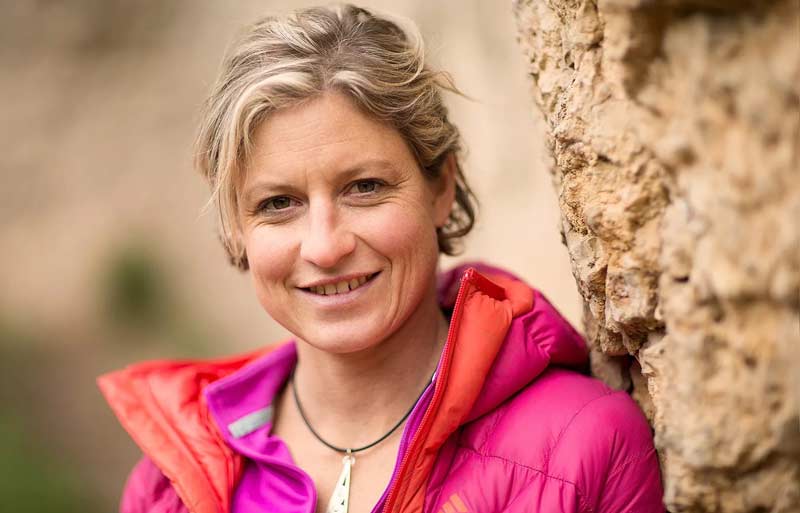
- World class climber, New Zealand / Plankenfels (Franconia)
- Women's speed record “The Nose” El Capitan (with Libby Sauter): 4:43 h
- Mixed speed record “The Nose” El Capitan (with Sean Leary): 3:29 h
- Link-up Half Dome - Nose (with Chantel Astorga): 20:09 h
“It was only a brief moment while training with my climbing partner Sean Leary for the mixed speed record on the 1000 meter wall“ The Nose ”on El Capitan. We climbed the rope simultaneously - with only a few belayings between us. Sean slipped but was able to catch himself again. Had he not succeeded in doing that, it would have been. For him, but also for me. I couldn't have held him free on the rope. I was aware of the possible consequences. But I had confidence in my climbing partner and it was worth the risk to me. At least then. I thought the framework in which I was moving was relatively safe. Today I see it differently: Actually, nothing was safe at all.
Sean slipped but was able to catch himself again. Had he not succeeded in doing that, it would have been. For him, but also for me.
Mayan Smith-Gobat
There are only a few women who climb in the alpine speed style. Women in our society are more cautiously socialized than caring and attentive mothers. That is deeper inside us than we want to perceive. I was probably an exception. How come? I was too curious, wanted to know at least roughly what records from an Alex Honnold or Dean Potter feel like. Even if I was far from their times.
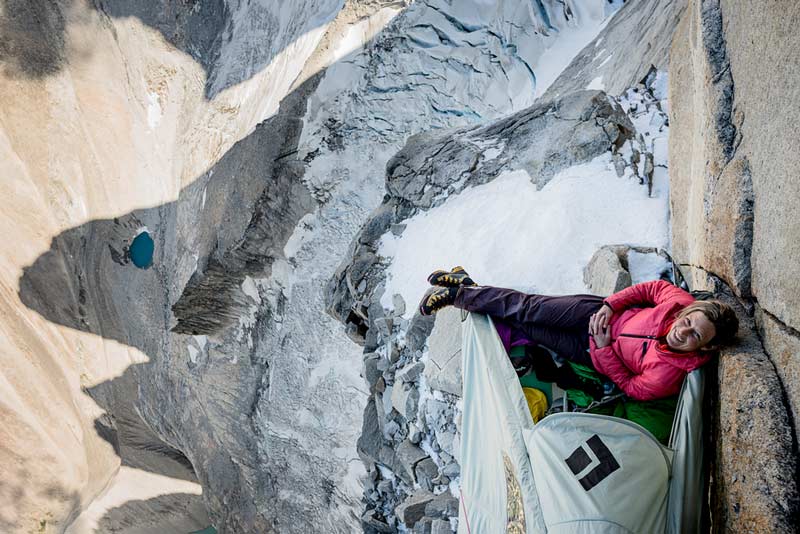
And, yes, I also wanted to satisfy my instinct for self-expression. As a child I was very shy and had little self-confidence. Through my success in climbing I have gained inner strength and the feeling of being 'worth' something. After the women's speed record in 2015, I knew: it can be done even faster. Like many other climbers, I was driven. In the meantime I have said goodbye to extreme climbing step by step. The death of several climbing friends showed me: I just pretend to have everything under control. Reducing my ambitions was and is a challenge.
Like many other climbers, I was driven.
I try to have fun with less challenging climbing projects. New goals help me with this. In the past few years I have devoted myself to a second passion with the same energy as I used to do in climbing. I have built a horse farm. In retrospect, my years of speed remain wonderful experiences, I have learned a lot. But from today's perspective I don't want to do something like that anymore because other things are more important to me. "
Andreas Steindl, 31 years
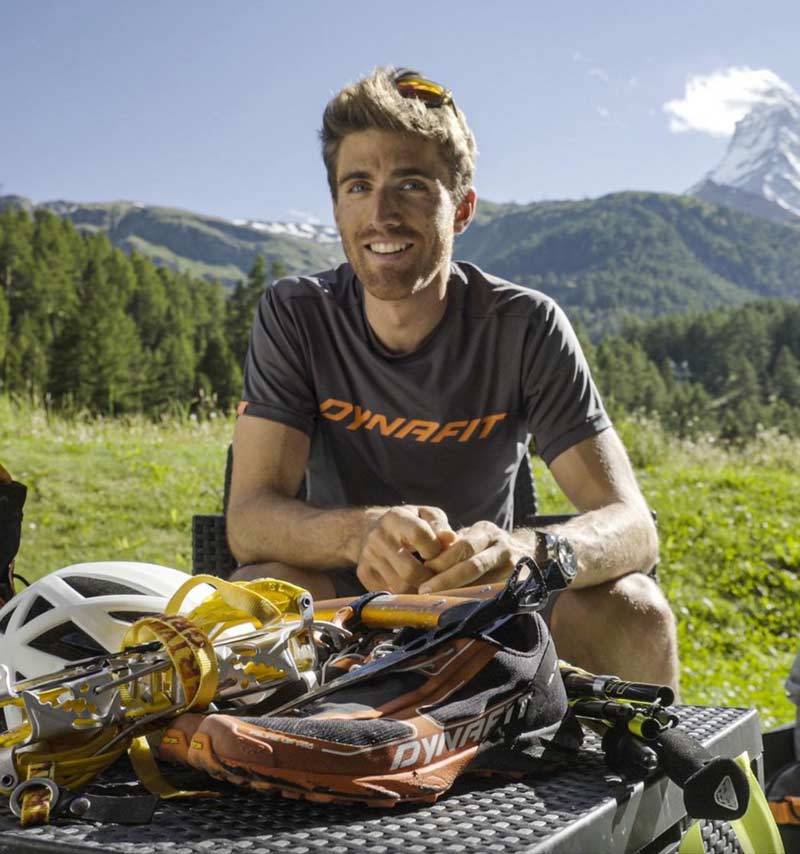
- World class ski mountaineers and trail runners, mountain guides, Zermatt (Switzerland)
- Lake Maggiore - Dufourspitze, 98 km / 4795 m ascent: 8:10 h
- Zermatt - Matterhorn - Zermatt: 3:59:52 h
- Four Matterhorn ridges (with Francois Cazzanelli): 16:04 p.m.
- Spaghetti tour (with Ueli Steck), 17 four-thousand-meter peaks between the Monte Rosa hut and the Kleines Matterhorn: 14:35 h
“Of course, there can be accidents with speed projects in exposed terrain. Of course, one can question the meaning and role model function of such actions. Just as you can question it, racing in circles with hellishly fast cars. But I also see speed projects as a clear, logical development in alpinism.
All relevant peaks and most sensible routes in the Alpine region have been climbed. Nevertheless, the human being remains a discoverer. With modern, lightweight equipment, we can travel much faster. This creates new personal dreams and goals. I also want to develop further from a sporting point of view. As a mountain guide, that sometimes puts me in a bind. On the one hand, responsibility and role model function. On the other hand, the sporty and athletic challenge that appeals to me.
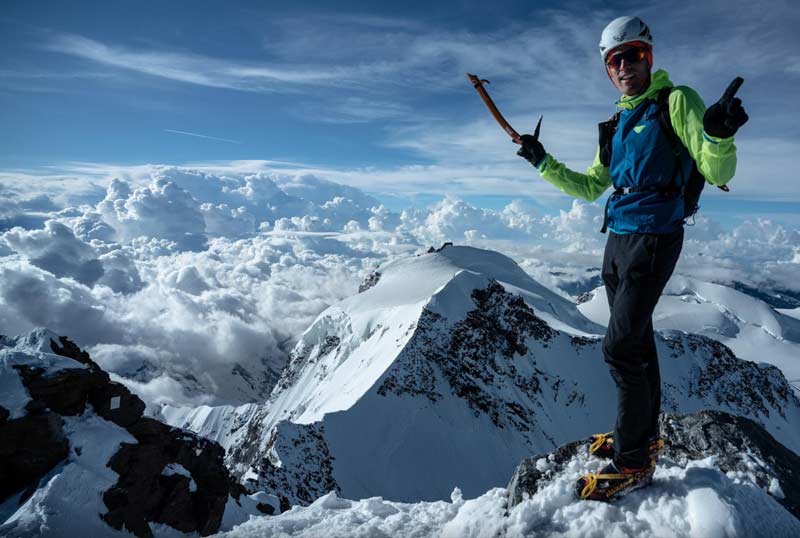
Accidents are usually due to carelessness or misjudgments. The basis must therefore be a realistic assessment of one's own abilities. I need to know exactly where the limit is to where I can stay focused. There is a lot of preparation behind speed records - years, decades. I've been to the Matterhorn 80 times, I know every step, I know every stone that holds. This is essential for survival: When descending, I have to decide in milliseconds how to put my foot correctly.
There is a lot of preparation behind speed records - years, decades.
Andreas Steindl
Of course, as a mountain guide, I am more cautious and slower with guests. But I also get more and more inquiries from my customers for long tours that have to be very quick. People are getting fitter. Classic alpinism is no longer enough for many today. Why also? Should we climb the mountains with nail shoes again? Looking for new challenges is human nature. In the future, even with record attempts, it will become more and more difficult to go one better - and at a certain point it will also be riskier. "
Toni Palzer, 27 years
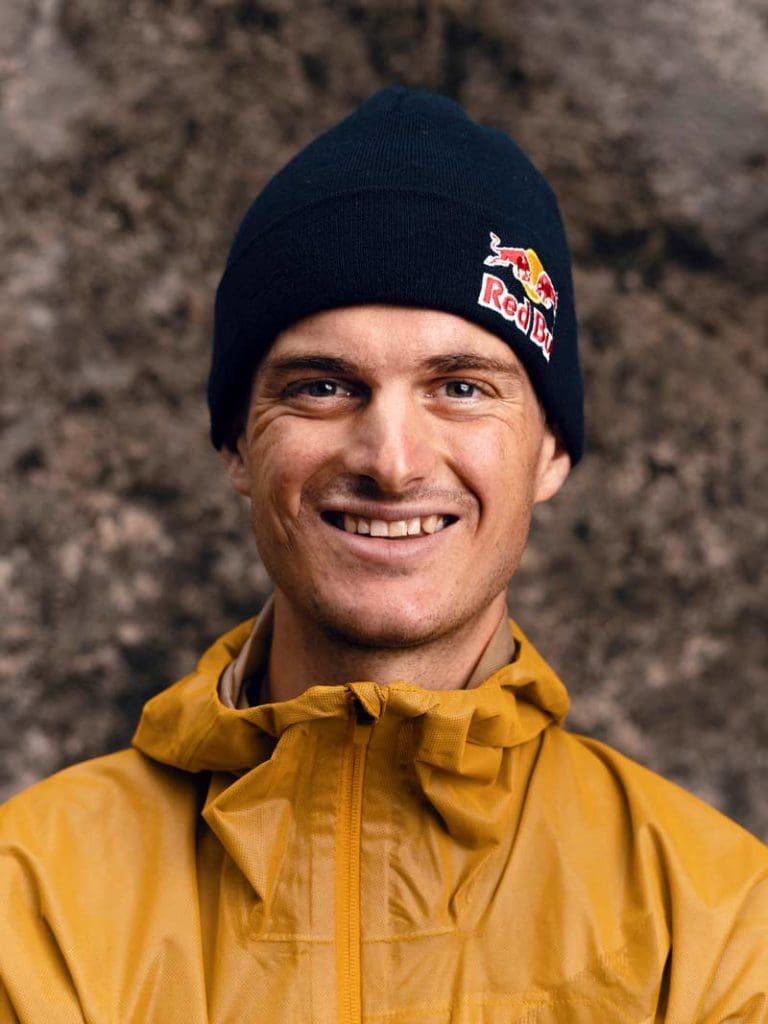
- World-class ski mountaineers and trail runners, Ramsau near Berchtesgaden (Germany)
- Watzmann crossing (2300 m ascent / 23 km): 2:47 h
- Top positions in alpine mountain races such as the Großglockner Berglauf, Drei Zinnen Alpine Run
- World class ski mountaineering, member of the German national team
Image Lorenz Richard / Red Bull Content Pool
“Experience and preparation are the key to not only being fast but also as safe as possible. In my opinion, the risk seems greater to outsiders than it actually is. The chance of getting caught in a thunderstorm on the Watzmann is significantly lower with a three-hour run in the morning than when I'm out for a full day or two. I can then minimize my equipment accordingly - but only then. Of course, there is still a residual risk. Because we don't play golf or tennis here.
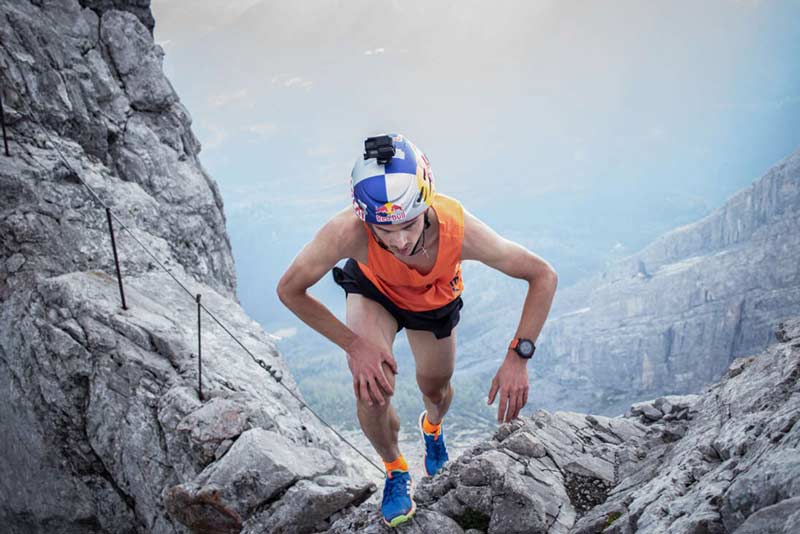
In mountain sports, we also have to deal with possible death. To avoid it, it's important to stay focused at all times. This is even easier for me at higher speeds in demanding terrain. I am in a flow of attention. If I just take a leisurely stroll, I'm less focused. So you shouldn't be over- or under-challenged. Key areas are exposed and steep passages. They do not forgive mistakes, especially when it comes to a quick descent. That's why a plan B always runs in my head at the same time: What do I do if I slip? Where else can I catch a fall? Fear is an important indicator here. If I were to hide them, it would be bad for my life expectancy.
It's important to stay focused at all times. This is even easier for me at higher speeds in demanding terrain. I am in a flow of attention.
Tony Palzer
My inner voice is an important signal for considered action - whether it is advising me to repent or give up. It is legitimate that traditional alpinists repeatedly criticize us for speed projects. But I think such projects are also part of the history of mountaineering. Are we bad role models with that? As an average skier, I don't fall down an icy downhill slope like the “Streif” at 150 km / h.
Responsibility for oneself and others is just as much a part of it as a healthy self-assessment. Personally, I don't need full risk every day. Just being able to move around the mountain is lucky enough. "
About the magazine bergundstieg
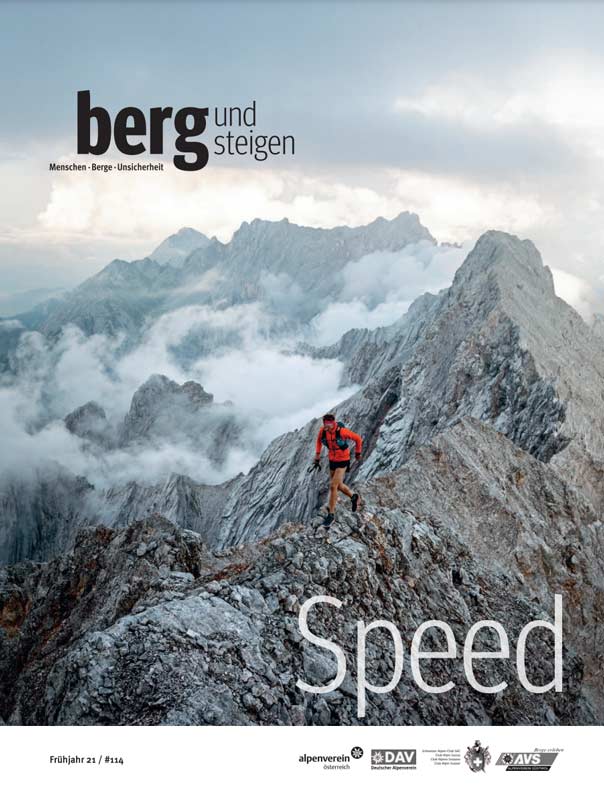
Bergundstieg is an international magazine for safety and risk in mountain sports and illuminates the topics of equipment, mountain rescue, rope technology, accident and avalanche knowledge. Bergundstieg is published by the Alpine Associations of Austria (PES), Germany (DAV), South Tyrol (AVS) and Switzerland (Customer Service).
+ + +
Credits: This article first appeared in the journal mountaineering.


